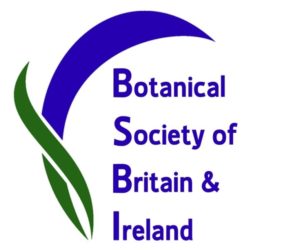Kirkcudbrightshire Botany Group at Torrs Moss, 5th July 2023
These two sites, together with a number of others in the Castle Douglas area, are of particular significance for their fen vegetation which demonstrates similarities with sites in the Borders, Anglesey and Norfolk. Other sites in the area which share this character are NTS Threave, Carlingwark Loch, Gelston Burn and Black Loch.
Torrs Moss is one of a series of basins which were once small lochs in the undulating landscape formed by glacial drumlins. Torrs Moss is one of the best examples which now remains as a basin fen, and is recognised as such by its SSSI status. The nearby Floors Loch is most probably a kettle hole with a circular fringe of marginal vegetation surrounding a central area of deep water. We visited both sites with the kind permission of the landowner.
We chose to visit Torrs Moss first, which is a short walk down a field margin, eastwards from the farm where we gathered. We crossed a deep boundary ditch at the entrance, where we found Common Duckweed Lemna minor and Greater Duckweed Spirodela polyrhiza.
Our initial impression was that the site was quite dry with a lot of willow scrub. Of course this has been an extremely dry season despite some recent rain. Two of the willows immediately caught our eye: the glossy leaves and prominent catkins of Bay Willow Salix pentandra as well as a very dark, small-leaved willow which we assumed to be Dark-leaved Willow Salix myrsinifolia. Specimens were taken of this latter to check with the BSBI willow referee. As we walked further into the moss, the substrate became spongier and there was movement in the peat substrate beneath our feet, but we encountered no open water or really wet areas. In places there was a dense growth of head-high Common Reed Phragmites australis amongst the willows and walking through it proved something of a challenge. Elsewhere the tall herb fen vegetation was extremely rich with a number of sedges including Greater Tussock-sedge Carex paniculata, Water Sedge C.aquatilis, Bottle Sedge C.rostrata, Remote Sedge C.remota and Common Sedge C. nigra. There was also a lot of fine-leaved vegetative sedge growth which we struggled to identify; the leaves were too wide for Slender Sedge C. lasiocarpa and we concluded that it was perhaps C. aquatilis growing in sub-optimal conditions. Flowering plants included Cowbane Cicuta virosa, Skullcap Scutellaria galericulata, Marsh Bedstraw Galium palustre, Meadow Vetchling Lathyrus pratensis, Common Valerian Valeriana officinalis, Marsh Cinquefoil Potentilla palustris, Wild Angelica Angelica sylvestris, Bog-myrtle Myrica gale, and Common Cottongrass Eriophorum angustifolium. Michael showed us the moss Calliergonella cuspidata which together with Bottle Sedge Carex rostrata is listed on the SSSI citation as being characteristic of the rare vegetation community type of mire otherwise only found in the Borders, Anglesey and Norfolk. Three other locally scarce species previously recorded here (Greater Spearwort Ranunculus lingua, Marsh Stitchwort Stellaria palustris and Lesser Tussock-sedge Carex diandra) eluded us on this visit.
We had still only explored a small portion of the Moss when lunchtime was called, and in order to have time to see Floors Loch too, we reluctantly left the Moss to have lunch in an adjacent field where some enormous Texel sheep were sleeping peacefully.
Floors Loch is a delightful small circular loch surrounded by a fringe of Phragmites australis and both White Water-lily Nymphaea alba and Yellow Water-lily Nuphar lutea. Amongst the Phragmites fringe were Bulrush Typha latifolia and a few opening flower heads of the beautiful Flowering Rush Butomus umbellatus. Several of us threw in grapnels, but apart from the water lilies there appeared to be little aquatic vegetation. However Bob managed to find some narrow-leaved Potamogeton which keyed out as Small Pondweed P. berchtoldii and Michael found a piece of Canadian Waterweed Elodea canadensis on the shoreline. The wet grassland surrounding the loch was full of flowering plants such as Cowbane Cicuta virosa, Greater Bird’s-foot Trefoil Lotus pedunculatus, Devil’s-bit Scabious Succisa pratensis, Marsh Thistle Cirsium palustre, Bittersweet Solanum dulcamara, Whorled Caraway Carum verticillatum, and the sedges Carnation Sedge Carex panicea and White Sedge C. canescens.
Denise pointed out two species of Sphagnum in the wet grassland: S.palustre and S.fimbriatum. According to the SSSI citation, the latter, together with Phragmites australis, characterises another nationally rare NVC community normally only recorded from Broadland fens.
Bob found a specimen of the rare Water Stick Insect Ranatra linearis and also a beetle which he identified later as the Skullcap Leaf Beetle Phyllobrotica quadrimaculata, which is new to Dumfries and Galloway!
Ken recorded the birds and we had 29 species, including singing Reed Buntings Emberiza schoeniclus at the moss and a newly-fledged family of Sedge Warblers Acrocephalus schoenobaenus and a calling Water Rail Rallus aquaticus at the loch.
This was an excellent day, and my thanks to everyone for their contributions and their company.

